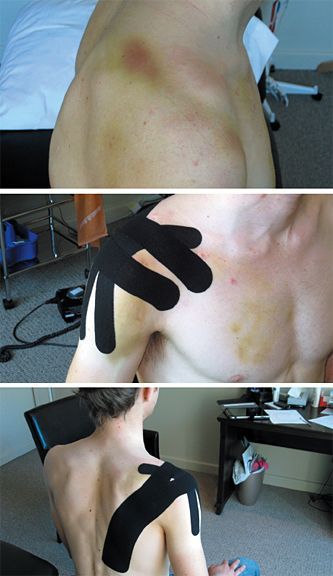New York's highest court of appeals has held that no-fault insurers cannot deny no-fault benefits where they unilaterally determine that a provider has committed misconduct based upon alleged fraudulent conduct. The Court held that this authority belongs solely to state regulators, specifically New York's Board of Regents, which oversees professional licensing and discipline. This follows a similar recent ruling in Florida reported in this publication.
Combining Local Treatment With Global Therapy
The evolution of modern health care practices has required professions to take a "divide and conquer" approach to understanding the body and what ails it. This is understandable; after all, there is seemingly endless information pertaining to the human body. No one individual can learn and understand all aspects of human health and disease. This has created an environment of specialization. In manual medicine, it has also led to the breakdown of the human body into distinct areas of isolation, often looking for a single pathoanatomical diagnosis.
Moving Beyond Localized Care
As chiropractors, we are well-positioned to provide care while keeping in mind the patient as a whole, rather than just a single condition. However, for various reasons, including the confinement of modern insurance requirements, we often find ourselves looking for a specific diagnosis based on the most severe issues associated with the presenting complaint.
Let's review of the importance of looking beyond the patient's initial complaint when providing care as a way to improve treatment outcomes, beginning by reviewing a few facts we have come to understand in manual medicine:
- Patients are entitled to have more than one complaint.
- The location of discomfort is often not the same as the area causing the aggravation.1
- Pain is often the last thing to show up and the first thing to go away within the injury-and-repair cycle.
- Nociceptive input from an injury can lead to changes in the nervous system in which the perception of pain is maintained in the absence of actual or ongoing tissue trauma.2-3
- Evaluating and treating injuries from a purely biomechanical or pathoanatomical model rarely yields the best results for long-term outcomes.4
In many cases we have to view ourselves as detectives. Other than acute cases, multiple events or stressors generally create the scenario for which our patient presents. It is our role to help piece the puzzle together to gain a clear perspective of how the patient ended up where they are. Once you do this, you are far better suited to help them overcome their injury.
To communicate this with my patients, I talk to them about local treatment and global therapy. This has had a huge impact on patient compliance and retention. They learn, for example, that yes, I will be treating their knee pain (the reason they came in), but in order to help prevent it from coming back, we may need to work on muscles around the pelvis. The additional "global therapy," including hands-on treatment and exercises, may take place even when the knee pain has subsided.
My patients learn that pain is a terrible indicator of progress and that in order to get the best results possible, we have to be able to differentiate between victims and criminals. In the case of localized knee pain, the knee, being the joint between the two longest bones in the body, is often the victim. The criminals can often be poor femoral rotatory control from weak gluteal muscles or poor ability to maintain the proper architecture of the foot, leading to excessive pronation.
Two Clinical Examples
As an example, consider a patient I recently treated who presented with a broken clavicle. Sure, the diagnosis is a non-displaced fracture of the left clavicle; but does it really end there? Even if we are dealing with repetitive-strain injuries, the ripple effect of dysfunction far exceeds the localization of the presenting complaint. The patient initially had been told that the fracture would heal and that there wasn't anything therapy could do to help heal the fracture. Directly, this may be true, although even that could be up for debate. Regardless, indirectly several different things could be done to help improve the patient's outcome while increasing their likelihood of preventing future complications.
A case like this is a perfect example of having to provide local treatment to the main area of complaint, but then providing global therapy as well to address other related aggravations or exacerbations that have resulted from the injury. In the case of a broken clavicle, you will often need to start with the global therapy first in order to restore healthy function to the maximum degree possible, while reducing the likelihood of aggravation and secondary injuries. With my patient, I had to evaluate the extent of the damage both locally and globally. This included screening for neck trauma and signs of concussion, as well as soft-tissue damage.
With an injury such as this, the dynamic support of the shoulder girdle would also be compromised due to nociceptive drive to the central nervous system, leading to alterations in muscular tone as well as deficits in motor control.5-6 The bruising often associated with clavicle fracture also acts like battery acid, leading to irritation of the free nerve endings – further complicating the healing process.
Some of the treatment techniques I use include instrument-assisted soft-tissue technique, which can be employed to help stimulate the recovery process and restore function to key muscles trying to support the shoulder in its time of need. The use of elastic therapeutic tape can also be of immense benefit for helping to improve your treatment outcomes. Last year at the London Olympics, a Canadian mountain biker crashed two days before her competition and completely broke her clavicle. She was devastated, as you can imagine. She was evaluated by an orthopedic surgeon and the clavicle was not displaced, so she made the decision to race.
I know some of you are thinking, "Why would she still race?" This is something I cannot answer. That's a decision only the athlete can make. Think about focusing four years of your life on one goal: to compete at the Olympics. Then imagine having that dream torn away from you when you are so close. You would do anything to prevent that from happening, right?
This is an example of some of the difficult situations both athletes and therapists face when working at this level of athletics. There is a clear difference between being a sports therapist and an event practitioner. As an event practitioner, you can be faced with difficult situations in which you have to patch up the athlete, get them through the event, and hope that no significant damage has been done. Situations like these represent some of the most trying times in my career, because you have to prioritize performance outcomes over health.

In this case, the use of elastic therapeutic tape proved to be crucial. It is what allowed this athlete to race her Olympic dream and ultimately place 24th. Use of the tape helped me achieve two things. It helped provide neurosensory stimulation to the skin around the shoulder in order to modulate the nociceptive input, leading to a reduction in discomfort. It also helped keep the head of the humerus from dropping forward, which places more stress and strain on the shoulder joint, especially the triceps and teres muscle groups. This is a common presentation for shoulder injuries such as acromioclavicular separations and clavicular fractures. Here is an example (see images) of the taping procedure for a broken clavicle as performed on a top professional cyclist weeks before competing in the World Championships. I used a universal X over the deltoid, applied using a neurosensory technique. Then I applied a larger, pre-cut hip application over the shoulder using a structural technique to help pull the shoulder back into proper alignment.
Treating local and thinking global helps formulate better treatment plans. It also helps educate your patients on the process behind their path to recovery. Finding effective ways to communicate with your patients, as well as developing a broad range of new skills, can provide you an edge that helps build a successful practice.
I have always placed my technical skills second to the importance of communicating with patients. The local treatment / global therapy approach has become a pillar in my communication strategy. In today's go-go-go world, patient expectations need to be properly managed if you want them to stick with you.
Another communication strategy I use with my patients is equating their presenting complaint with playing Dominoes. To knock the Dominoes down is easy, and once started, it creates a chain of momentum that knocks more and more down. The injury the patient is aggravated with may actually be the last Domino in the chain, not the one that initiated the problem.
I also use the Domino analogy to explain why it takes longer to treat something than it does to get it in the first place. As you knock the Dominoes down, momentum takes over; to build them back up, you have to do it one by one. I find this explanation helps manage patient expectations and leads them to the realization that health and recovery after an injury is a process, not an event.
I hope you have found this information helpful. Give it a try in your practice and let me know how it works out. I would also like to hear of any great communication strategies or analogies you are using in your practice.
References
- Alonso-Blanco C, de-la-Llave-Rincon AI, Fernandez-de-las-Penas C. Muscle trigger point therapy in tension-type headache. Expert Rev Neurother, 2012 Mar;12(3):315-22.
- Ji RR, Woolf CJ. Neuronal plasticity and signal transduction in nociceptive neurons: implications for the initiation and maintenance of pathological pain. Neurobiol Dis, 2001;8(1):1-10.
- Shah JP, Phillips TM, Danoff JV, Gerber. LH. An in-vivo microanalytical technique for measuring the local biochemical milieu of human skeletal muscle. J Appl Physiol, 2005 Nov;95(5):1977-84.
- Nelson-Wong E, Alex B, Csepe D, Lancaster D, Callaghan JP. Altered muscle recruitment during extension from trunk flexion in low back pain developers. Clin Biomech, 2012 Dec;27(10):994-8.
- Arendt-Nielsen L, Graven-Nielsen T. Muscle pain: sensory implications and interaction with motor control. Clin J Pain, 2008 May;24(4):291-8.
- Graven-Nielsen T, Svensson P, Arendt-Nielsen L. Effects of experimental muscle pain on muscle activity and co-ordination during static and dynamic motor function. Electroencepahlogr Clin Neurophysiol, 1997 Apr;105(2):156-164.



